Castagnaccio is a traditional Tuscan cake with chestnut flour, olive oil, and nuts. This vegan fall dessert recipe is gluten-free, egg-free, sugar-free, and easy to make!
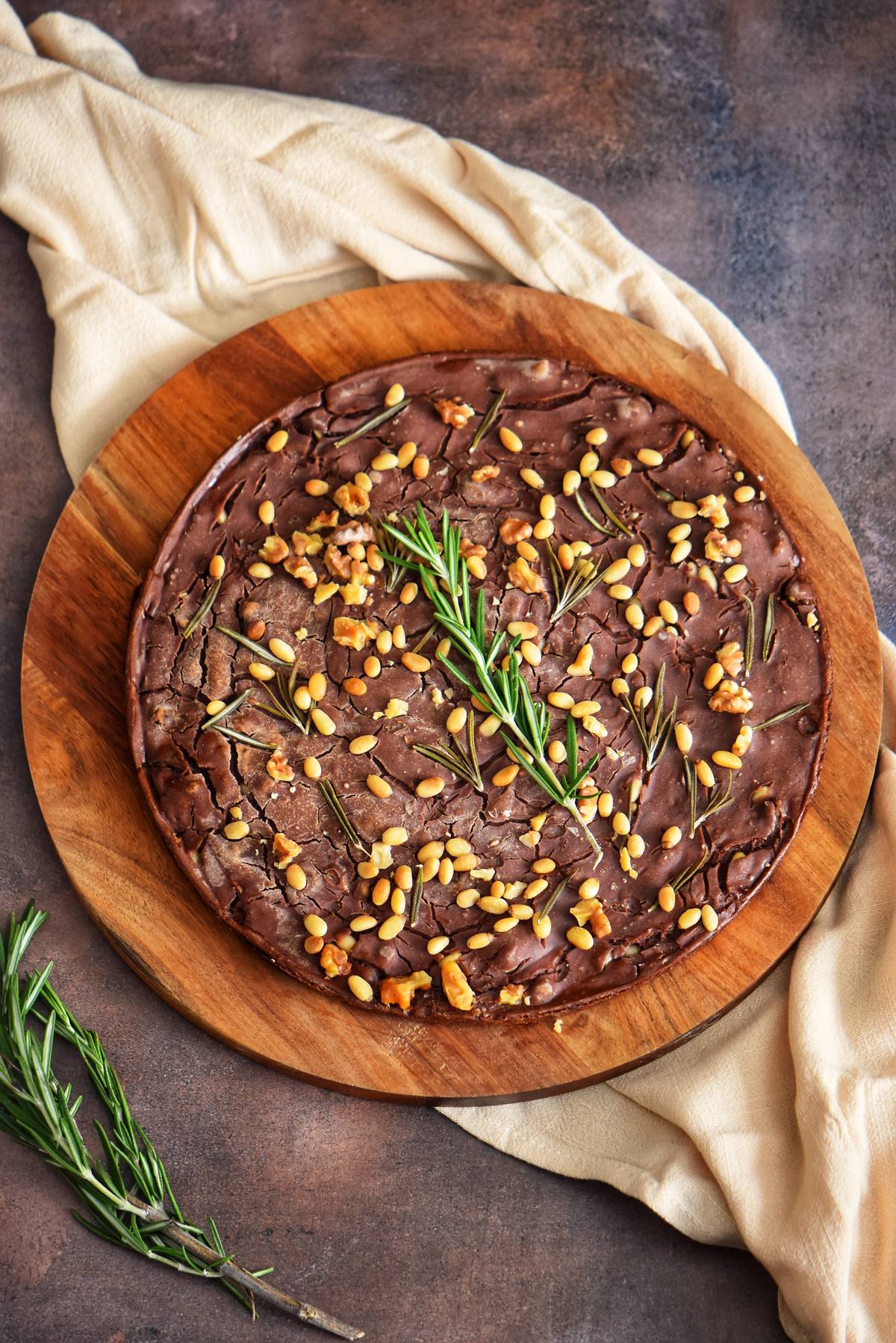
Jump to:
Introduction
So many traditional Italian recipes use simple quality ingredients.
This is because Italians take great pride in their food and know that the best way to create delicious dishes is by using only the best ingredients. This philosophy makes Italian cuisine so special and loved by so many worldwide.
When it comes to making a delicious Italian dish, whether sweet or savory, the quality of the ingredients is always paramount.
This is why many traditional recipes use only the freshest and finest ingredients.
For example, when you want to enjoy a classic pasta dish like cavatelli and broccoli, making homemade cavatelli provides a unique toothsome texture that you can’t find in store-bought dry pasta.
Of course, making a fantastic Italian dish requires more than excellent sourcing ingredients. You also need the right cooking techniques to bring out the best in each ingredient.
The same principles apply to this traditional dessert called castagnaccio.
If you’re looking for a unique vegan cake recipe with an earthy flavor, look no further than this traditional Tuscan chestnut cake!
What is castagnaccio?
Castagnaccio is a dense cake with chestnut flour, olive oil, nuts and raisins. Traditionally, it is naturally vegan, gluten-free and sugar-free.
The name derives from castagna, which is chestnut in Italian.
If you have ever tasted chestnuts, then you know how scrumptious they are!
History will tell us that chestnuts were abundant (and still are) in the Tuscan area of Italy and were used as a replacement for wheat flour, which was more expensive.
This cake goes back to the 16th century and was typically made during the fall season when chestnuts were in season and abundant.
This unsweetened cake was referred to as a poor man’s dessert and used local ingredients, like pine nuts and olive oil. This sugar-free dessert gets its slight sweetness from the chestnut flour and raisins.
If you like the flavor of roasted chestnuts, chances are you will enjoy the taste of this Tuscan chestnut dessert with ancient origins.
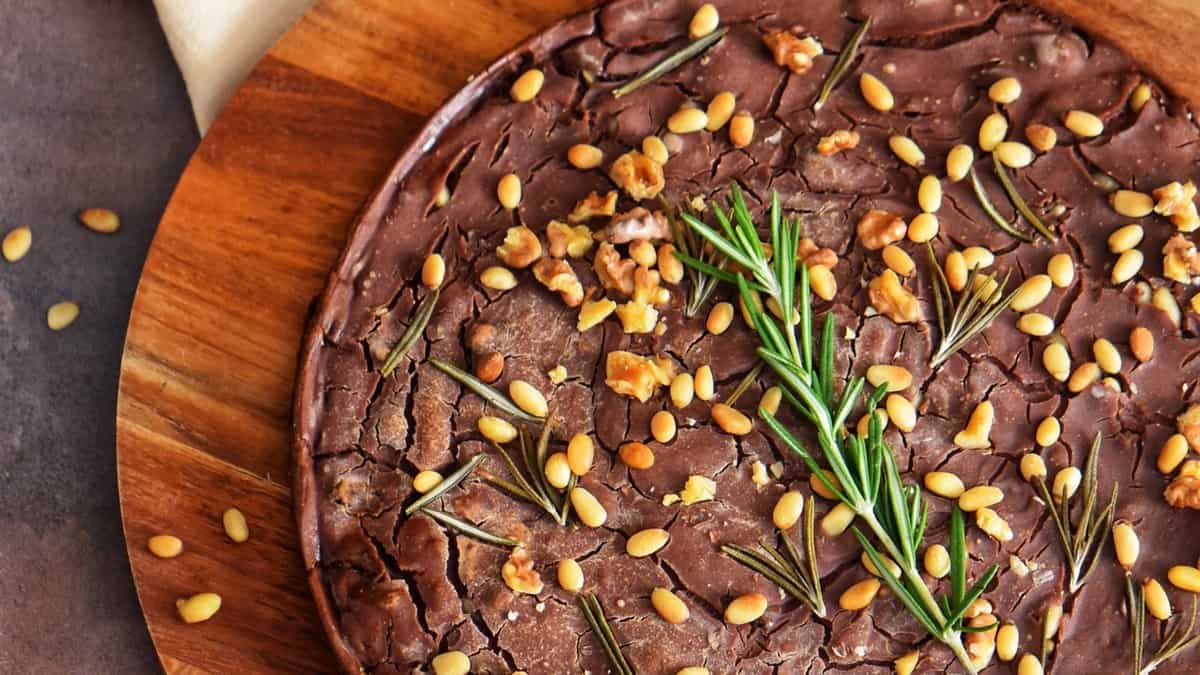
What does it taste like?
Castagnaccio has a unique and nutty flavor unlike any other dessert you’ve ever had.
The chestnut flour provides a dense and moist texture, while the olive oil and raisins add a touch of sweetness and flavor. The combination of nuts also adds a lovely texture to the cake, making it a truly unique and special treat. Although, some would say that it is an acquired taste due to the lack of sweetness.
This castagnaccio cake is usually served plain, but if you want to dress it up, you can top it with a dollop of ricotta. This savory, flat cake pairs well with a vin santo.
While this traditional Tuscan recipe is traditionally made with just a few simple ingredients, the quality of those ingredients makes this dish special.
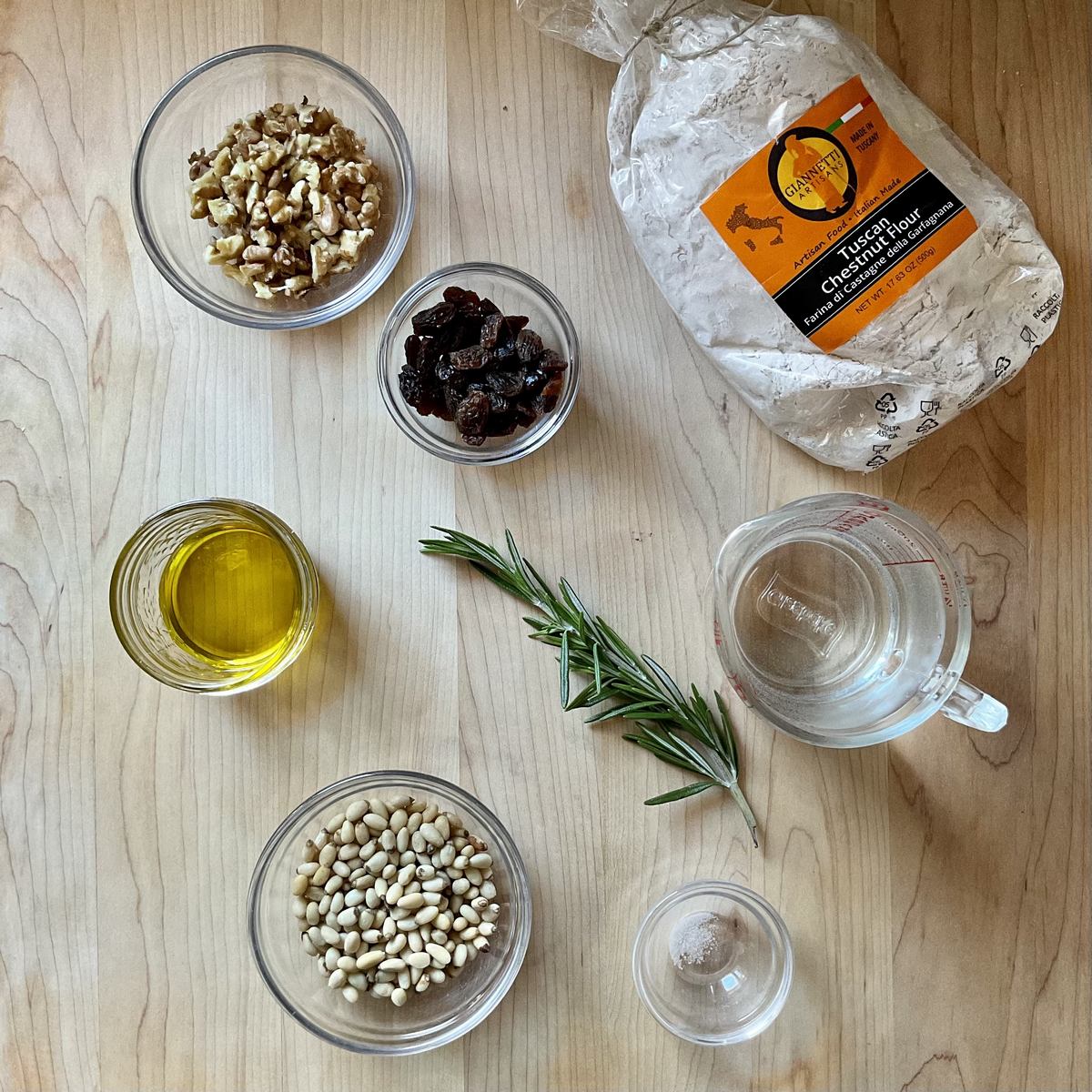
Ingredients
Italy is home to a wealth of regional culinary traditions and differences. The ingredients used to make this Italian cake is no exception.
The Tuscan regions each have their variations of the classic dish. For example, Garfagnana – located between the mountains of Tuscany in the stunning province of Lucca – makes a version with walnuts and orange zest.
Let’s explore some of the ingredients in this recipe:
Chestnut flour: As the name suggests, chestnut flour is made from ground-up chestnuts. It has a slightly sweet and nutty taste that pairs well with this cake’s olive oil and nuts. Chestnut flour is not as common as other flours, but you can still find it in most specialty stores or online.
Olive oil: You’ll want to use good quality olive oil for this recipe. Extra virgin olive oil will add the most flavor, but you can also use light olive oil if you prefer.
Nuts: Traditionally, castagnaccio is made with pine nuts and walnuts, but as was mentioned, there are exceptions.
Raisins: Dried raisins provide the sweetness of this rustic cake.
Rosemary: Fresh rosemary leaves add a fragrant and herby flavor to this cake.
Step-by-step directions
Preheat the oven to 350°F (175°C). Set the rack in the middle.
Soak ⅓ cup of dried raisins in a small bowl of room-temperature water for 10 minutes to soften them.
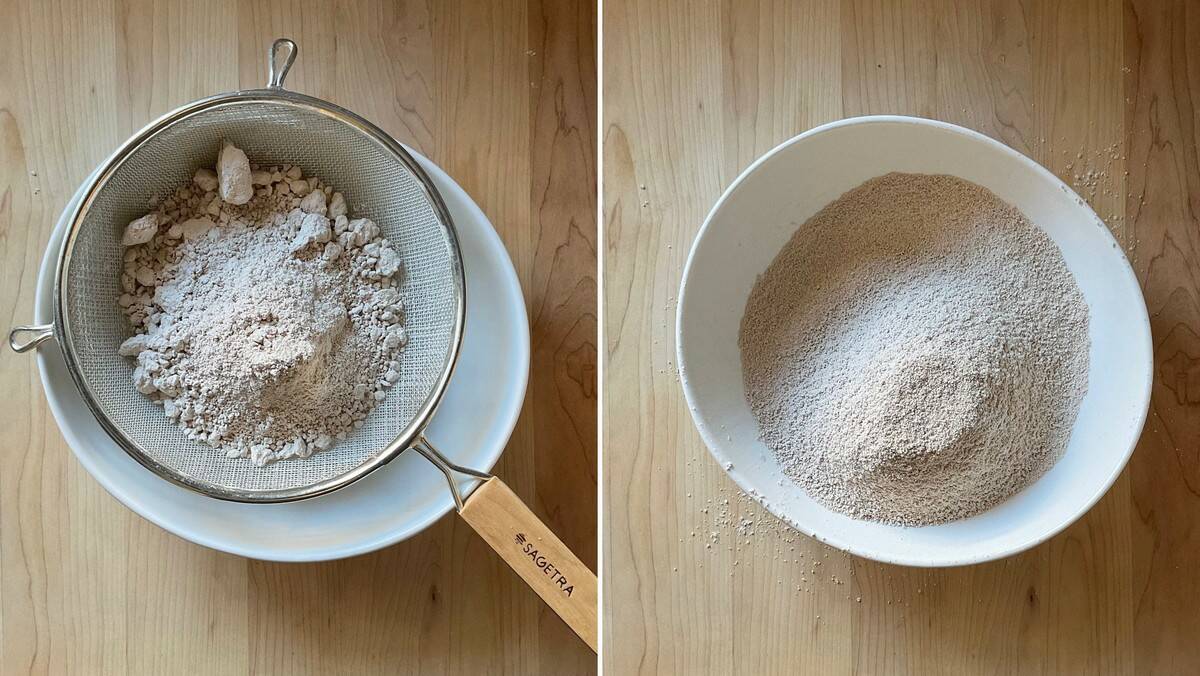
Meanwhile, sift 2 cups (250 grams) of chestnut flour and ⅛ teaspoon salt into a large bowl to ensure no clumps.
Create a well. Then gradually hand whisk 1½ cups of room temperature water into the dry ingredients, a little at a time, until there are no more lumps and the mixture is smooth.
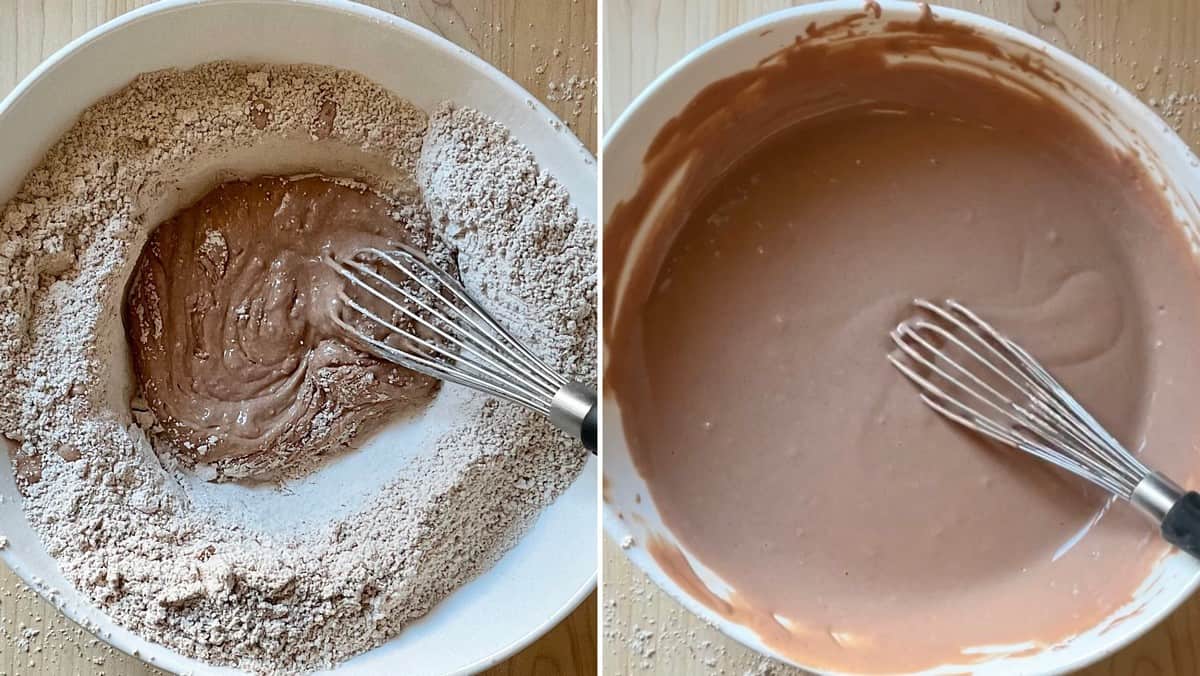
Allow the mixture to rest in the mixing bowl for 30 minutes after it becomes smooth and has no clumps.
Drain the raisins and add them to the smooth batter.
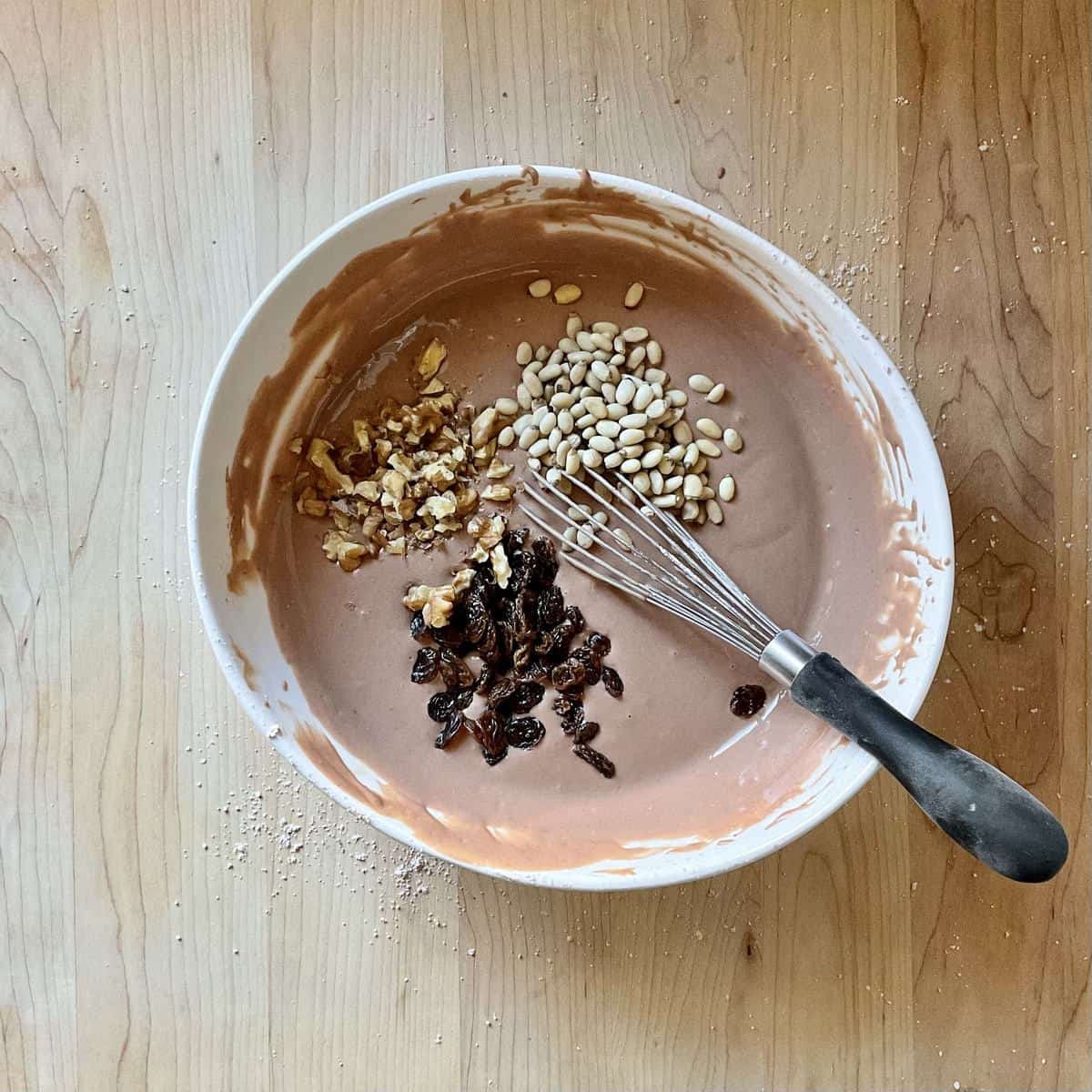
Add half of the pine nuts (2-3 tablespoons) and half of the chopped walnuts (2 tablespoons) to the mixture. Mix to combine.
Add 2 tablespoons of olive oil to a 10-inch (25 cm) round cake pan. Spread the oil over the base and partly on the sides.
Slowly pour the mixture into the pan, and then use a spatula to level it off.
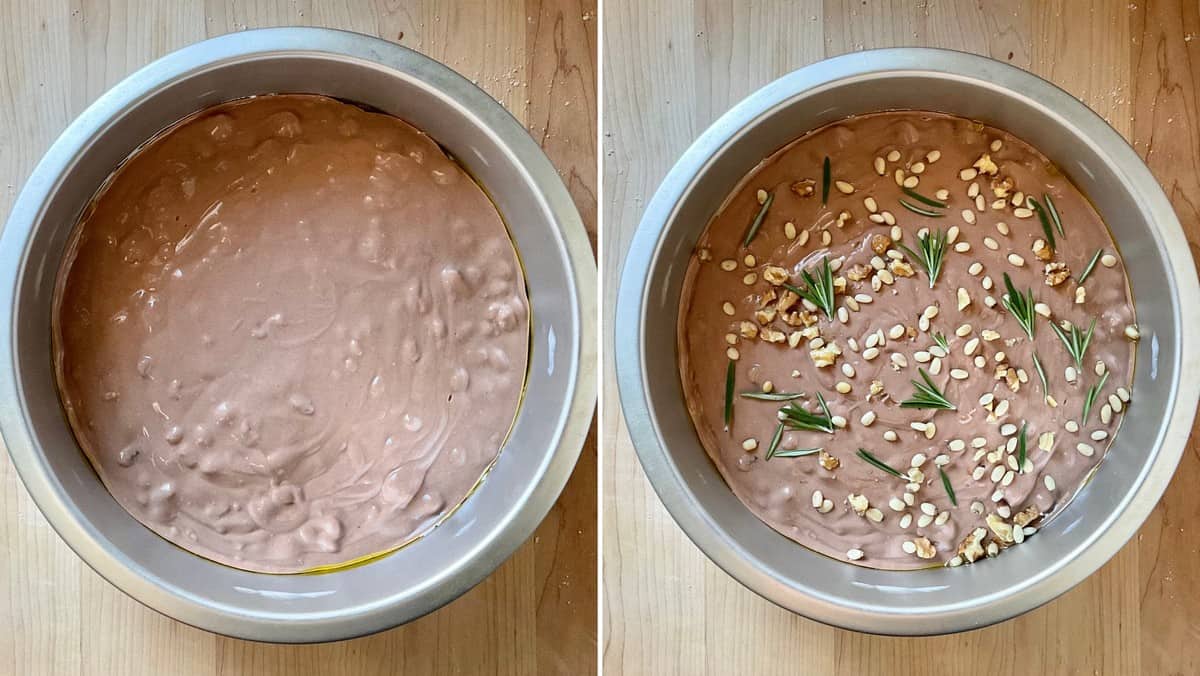
Evenly distribute the remaining pine nuts and walnuts by sprinkling them over the top of the cake. Add 10-12 rosemary needles.
Drizzle with 2 tablespoons of olive oil over the top.
Bake for approximately 30-35 minutes or until cracks form on the surface and the nuts are golden brown. The surface should be firm and dry.
Let the cake cool in its pan for 10 minutes before you plate it.
Serve it warm or at room temperature.
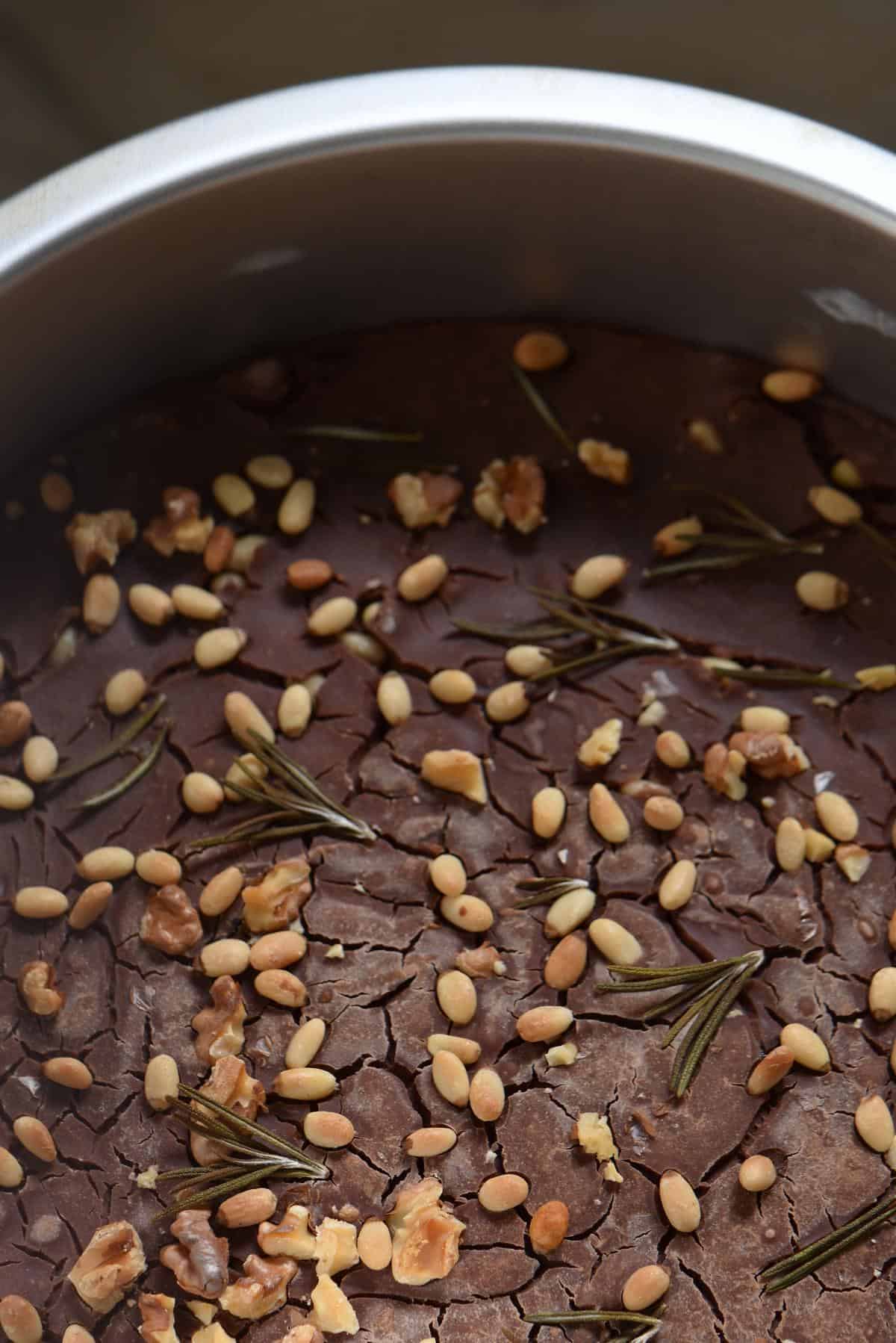
Tips
- Preheat your oven to ensure that your cake cooks evenly.
- Always sift the chestnut flour before using it to minimize clumping.
- After whisking the water with the chestnut flour, it is necessary to let the thin batter rest before cooking, allowing this starchy flour time to hydrate properly.
- After soaking the raisins, unstick any of them before adding them to the batter so they don’t clump together.
How to store?
The castagnaccio will stay fresh for 3 days at room temperature in an airtight container. Sadly, storing it in the fridge alters the texture to rubber and is not advised.
Recipe origin
If you have visited here before, you know that I love chestnuts. I enjoy having them roasted, boiled or pureed.
I also love using chestnuts in recipes.
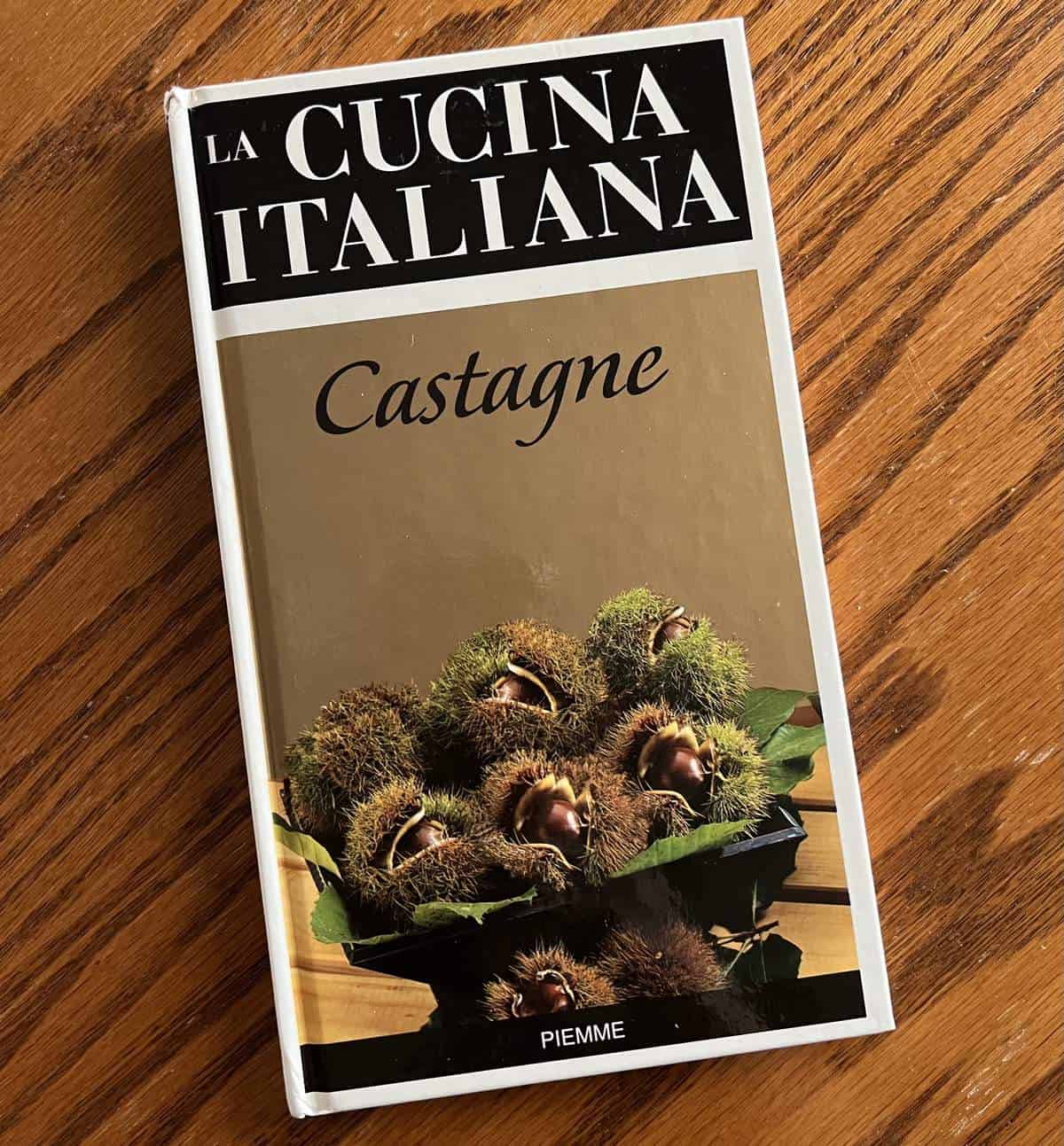
A few decades ago, I was gifted a small cookbook on chestnuts from my aunt Lil entitled “Castagne.” Flipping through the pages, I came across a recipe for a Tuscan chestnut cake made with chestnut flour.
I had never heard of such a thing, but it sounded intriguing. I decided to give it a try. Although I enjoyed it, it got mixed reviews from my family.
I forgot about the recipe until I found it again on Jul’s Kitchen a few years ago and decided to try it again. I kept the same ratio of flour to water, modifying only the proportions of nuts. This recipe was so much better!
If you are looking for a unique and different cake that is naturally sweet, try this Tuscan chestnut cake.
I think you’ll be pleasantly surprised!
THANKS SO MUCH for following and being part of the She Loves Biscotti community, where you will find Simple & Tasty Family-Friendly Recipes with an Italian Twist.
Ciao for now,
Maria
We are a participant in the Amazon Services LLC Associates Program, an affiliate advertising program designed to provide a means for us to earn fees by linking to Amazon.com and affiliated sites.
You can find the chestnut flour I am using in my amazon store, if it interests you, head over to my amazon store for all the details.
★★★★★ If you have made this chestnut flour recipe, I would love to hear about it in the comments below and be sure to rate the recipe!
Recipe
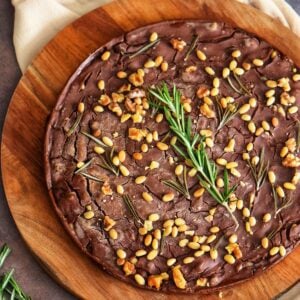
Castagnaccio: Tuscan Chestnut Cake Recipe
Ingredients
- ⅓ cup raisins dried, 50 grams
- 2 cups chestnut flour 250 grams
- ⅛ teaspoon salt
- 1½ cups water room temperature
- ⅓ cup pine nuts 40 grams, separated
- ¼ cup walnuts chopped, 30 grams, separated
- 4 tablespoons olive oil extra virgin, separated
- 1 sprig rosemary fresh
Instructions
- Preheat the oven to 350℉ (175°C). Set the rack in the middle.
- Soak the raisins in a bowl of room-temperature water for 10 minutes to soften them.
- Sift the chestnut flour and salt into a large bowl to ensure there are no clumps.
- Create a well. Then gradually whisk the room temperature water into the dry ingredients, a little at a time, until there are no more lumps and the mixture is smooth.
- Allow the mixture to rest for 30 minutes after it becomes smooth and has no clumps.
- Drain the raisins and add them to the batter.
- Add half of the pine nuts and chopped walnuts to the mixture. Mix to combine.
- Add 2 tablespoons of olive oil to a 10-inch (25 cm) round cake pan. Spread the oil over the base and partly on the sides.
- Slowly pour the mixture into the pan, and then use a spatula to level it off.
- Sprinkle the remaining pine nuts and walnuts over the surface of the cake so that they are evenly distributed. Add 10-12 rosemary needles.
- Drizzle with 2 tablespoons of olive oil over the top.
- Bake for approximately 30-35 minutes or until cracks form on the surface and the nuts are golden brown. The surface should be firm and dry.
- Let the cake cool in its pan for 10 minutes before you plate it.
- Serve it warm or at room temperature.
Video
Notes
- Preheat your oven before starting, ensuring that your cake cooks evenly.
- Always sift the chestnut flour before using it to minimize clumping.
- After whisking the water with the chestnut flour, it is necessary to let the thin batter rest before cooking, allowing this starchy flour time to hydrate properly.
- After soaking the raisins, unstick any of them before adding them to the batter so they don’t clump together.


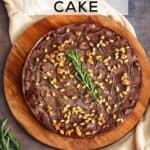
val
Such a great tasting dessert! Thanks for another great recipe Maria!
Maria
My pleasure Val! Thanks for stopping by!
Linda
Hi Maria,
I would love to try this recipe but as there are only 2 of us I was wondering if I could freeze half for later?
Maria
Thanks for your interest Linda. Unfortunately, the texture changes and not in a good way. Alternatively, I would suggest making half the recipe and baking it in a smaller cake pan. I hope that helps. Thanks so much for stopping by.